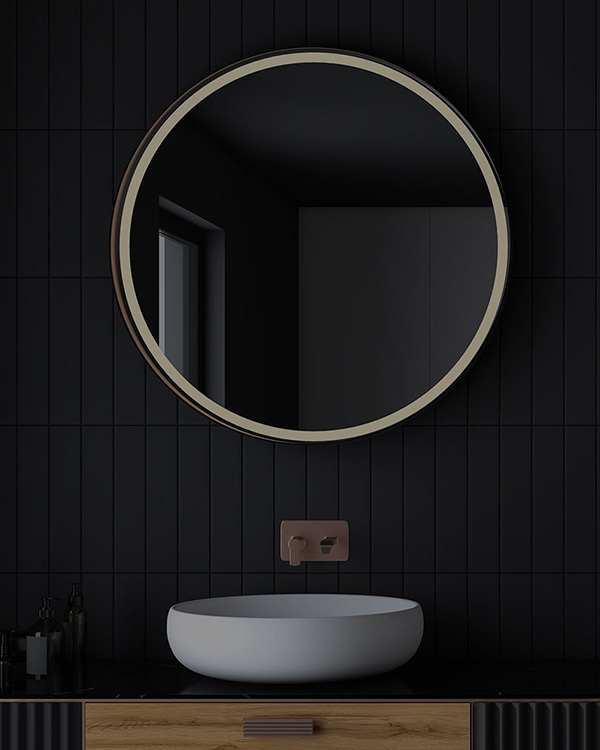Installing a bathroom mirror at the wrong height can cause discomfort and poor functionality. A misaligned mirror leads to awkward reflections and an unbalanced design. Proper placement ensures a stylish, practical, and visually appealing bathroom setup.
The ideal height for a bathroom mirror over a vanity depends on vanity dimensions, faucet height, and user needs. Proper measurements ensure a functional, aesthetically pleasing, and well-proportioned bathroom mirror installation.
Wondering how to determine the perfect bathroom mirror height? Let’s explore the key factors.
How Big Should A Mirror Be Over A Bathroom Vanity?
Selecting the right size for a bathroom mirror ensures both practicality and visual harmony. Ideally, the width of the mirror should be slightly narrower than the vanity, typically by 2–4 inches on each side. Standard bathroom mirrors range from 24 to 48 inches in width, depending on vanity size. The height should allow for a comfortable reflection, usually positioning the top of the mirror 65–75 inches from the floor. Larger mirrors create a more open feel, while smaller ones can complement minimalist designs. When choosing a mirror, consider the bathroom’s proportions to achieve the best fit.
Evaluating Bathroom Mirror Styles
Bathroom mirrors come in a variety of styles, each influencing placement height. Frameless mirrors provide a sleek, modern aesthetic and are often installed flush against the wall. Framed mirrors add depth and structure, requiring careful height consideration due to frame thickness. Round and oval mirrors introduce softness to bathroom designs, while rectangular options offer a classic look. Adjustable or tilting mirrors are ideal for shared spaces, accommodating different user heights. Selecting a mirror style that complements the vanity enhances both functionality and visual appeal.
Measuring Your Vanity Dimensions
The vanity’s dimensions play a crucial role in determining the correct mirror height. Standard bathroom vanities range from 30 to 36 inches in height, with mirror placement adjusted accordingly. For single vanities, centering the mirror above the sink ensures symmetry. Double vanities may require two smaller mirrors or one large mirror spanning both sinks. Ensuring the mirror is proportionate to the vanity helps create a balanced and aesthetically pleasing bathroom layout. Precise measurements prevent misalignment and ensure a polished final look.
Factoring In Sink And Faucet Heights
The height of the sink and faucet directly affects where the bathroom mirror should be placed. Most experts recommend positioning the bottom of the mirror 5–10 inches above the sink to prevent water splashes. If the faucet extends higher than usual, additional clearance is necessary to maintain a cohesive design. Vessel sinks, which sit above the vanity, require mirrors to be mounted higher than traditional undermount sinks. By factoring in sink and faucet heights, you ensure optimal mirror placement for both functionality and design.
Accounting For Mirror Frame Thickness
Mirror frames add depth and style but also influence installation height. Thicker frames reduce the reflective surface area, requiring careful positioning to maintain usability. Heavier frames may need reinforced mounting, especially for larger mirrors. Frameless mirrors, in contrast, maximize reflection space and allow for a more flexible installation height. When selecting a framed mirror, ensure the additional thickness does not obstruct usability. Taking frame thickness into account ensures both aesthetic appeal and practical functionality.
Conclusion
The right bathroom mirror height depends on vanity size, faucet placement, and mirror style. Proper positioning enhances both functionality and bathroom aesthetics.


